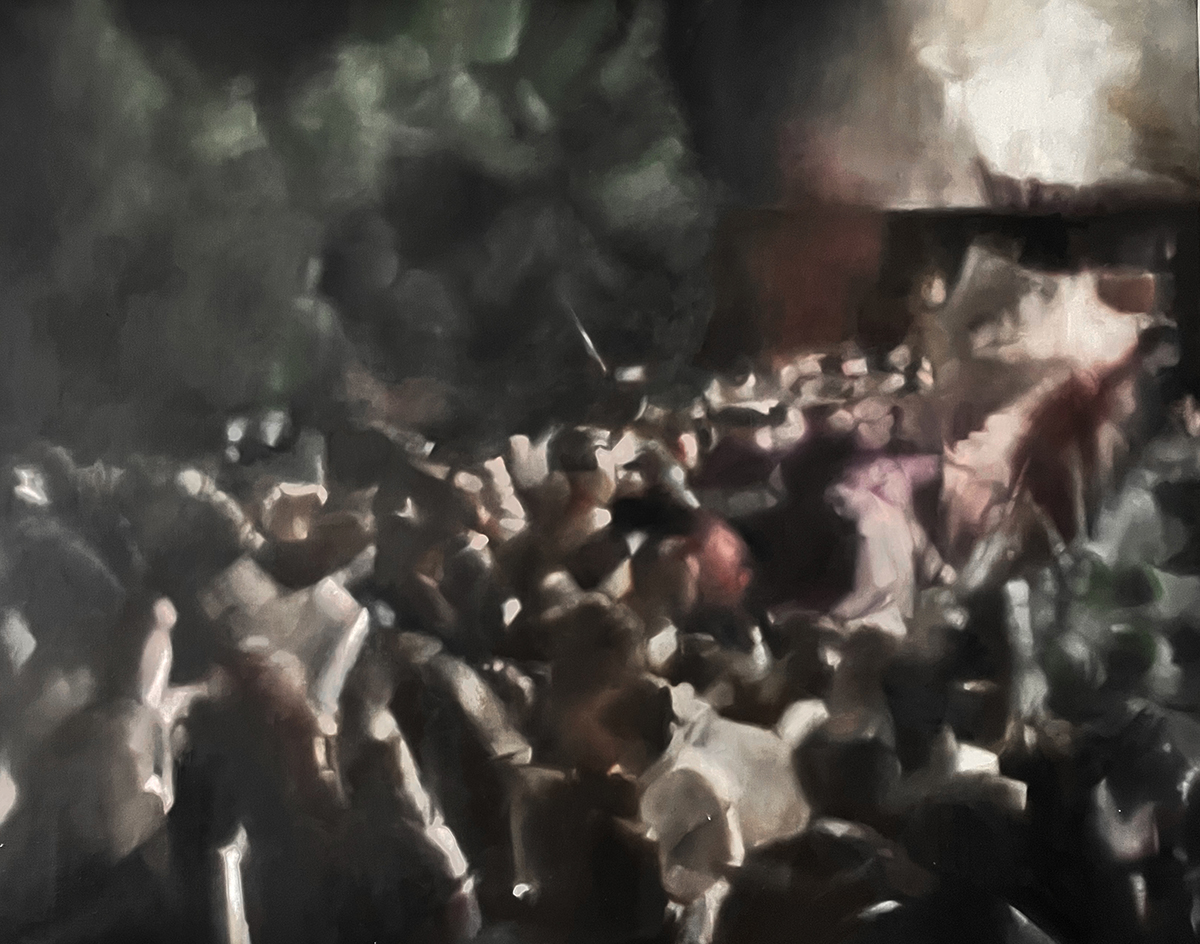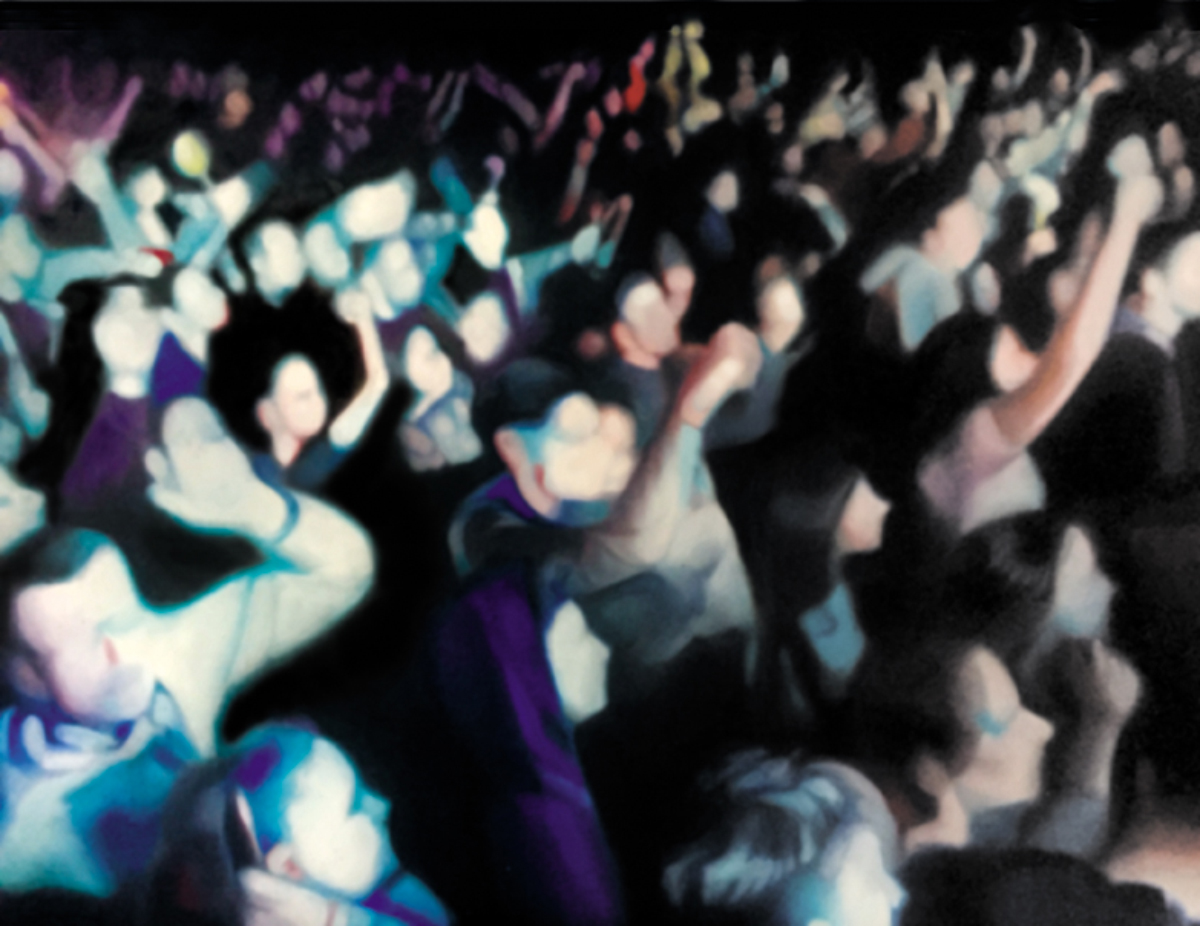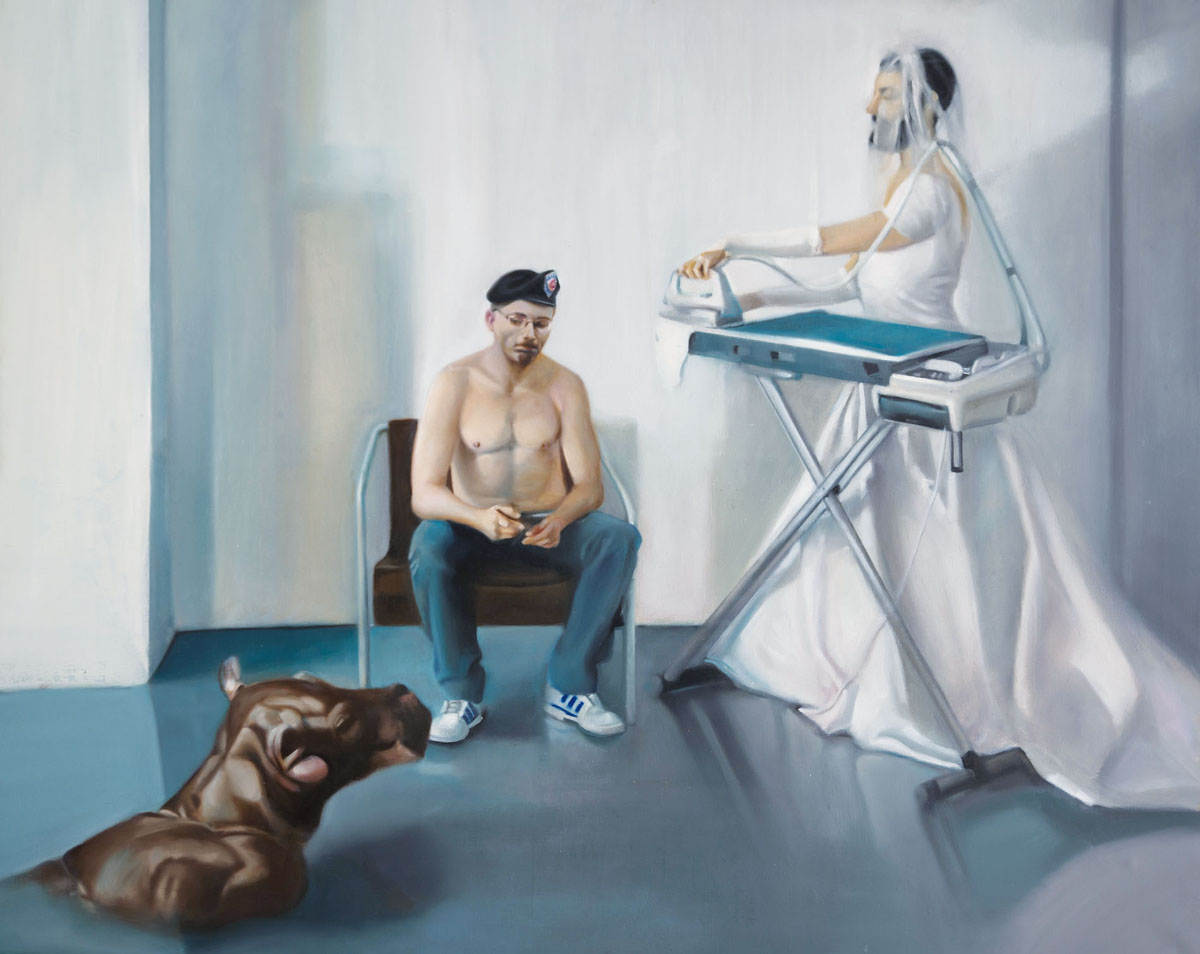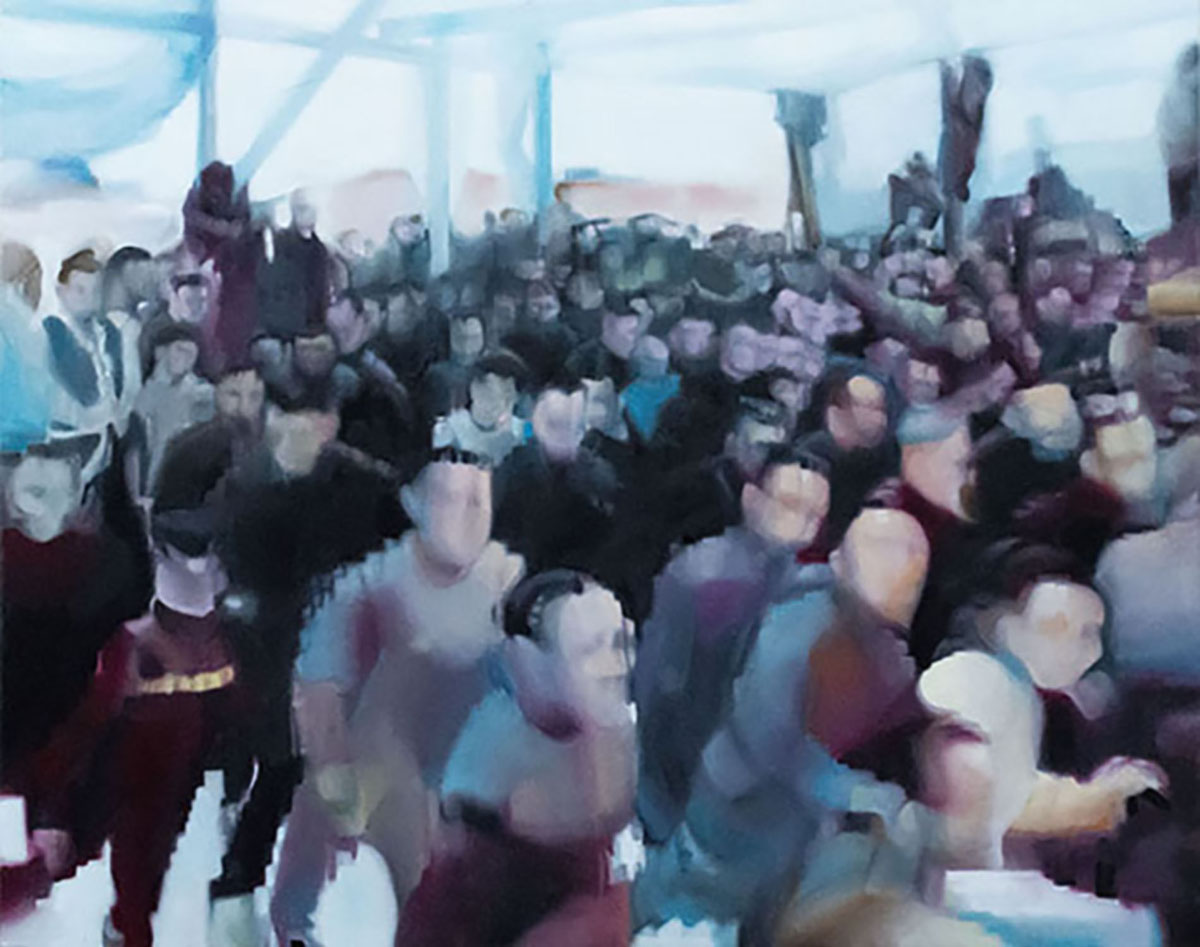Antropocène
L’anthropocène est la période géologique actuelle. Selon un consensus d’experts, elle aurait débuté à la fin du XVIIIe siècle avec la révolution industrielle. Cette ère est définie par l’influence de l’humanité sur notre planète, ou, quand l’humain devient une force géologique. Une force gloutonne qui dévore jusqu’à ceux-là mêmes qui l’ont engendré. Cette série est un travail sur l’urgence, les déplacements des populations… Humainement, ces images me bouleversent : ce qui manque à l’humanité, c’est elle-même. Picturalement, ce sont des modèles pour manier des aberrations de couleur, des grouillements de détails et leurs inconstances formelles.
J’importe, dans un logiciel, des images de foule, de bousculades, de presse humaine trouvées dans les médias. Si besoin est, si l’image est « trop propre », je les altère pour que l’aventure picturale puisse commencer. Il ne s’agit pas de réalisme photographique mais d’élaborer palettes et touches. je recadre la photo, homothétiquement, selon la taille des tableaux, en principe des 100 F (162 x 130 cm). Le choix d’un format identique appuie la généralité de ces événements. Grâce à ce logiciel, je quadrille l’image et je l’imprime sur un format A4. Ce quadrillage, exactement reproduit sur la surface du tableau, me permet de redessiner à la main ladite image, tout en l’agrandissant. Ce document imprimé me sert de référence pour recomposer le rythme des couleurs et décontextualiser les scènes dans une divagation picturale qui rend compte de l’ordre mondial de ces errances humaines.
Antropocene
The Anthropocene is the name of the current geological period. According to a consensus of experts, it began with the industrial revolution at the end of the 18th century. This era is defined by humanity’s influence over our planet or when Man became a geological force, a greedy force which devours almost as much as it creates. This series is a collective work looking at emergency and the displacement of populations. As a human being, these images move me deeply: what’s missing in humanity is itself. Pictorially, they are models for manipulating aberrations of color, flurries of details and their formal inconsistencies.
Using software, I import images of jostling crowds, hordes of people found in the media. If the images are too “clean”, I alter them so that the pictorial adventure can begin. This isn’t photographic realism, but the development of palettes and touches. I crop the photos homothetically according to the size of the paintings, in theory 100 F (162 x 130 cm). The choice of an identical format complements the general nature of these events. Thanks to this software, I can mark the image up into squares and print it in A4 format. This square grid, which is reproduced perfectly on the surface of the painting, allows me to draw the image again by hand and to enlarge it. I use this printed document as a reference for reworking the rhythm of the colors and decontextualizing the scene into a pictorial journey which recognizes the world order of this human vagrancy.




